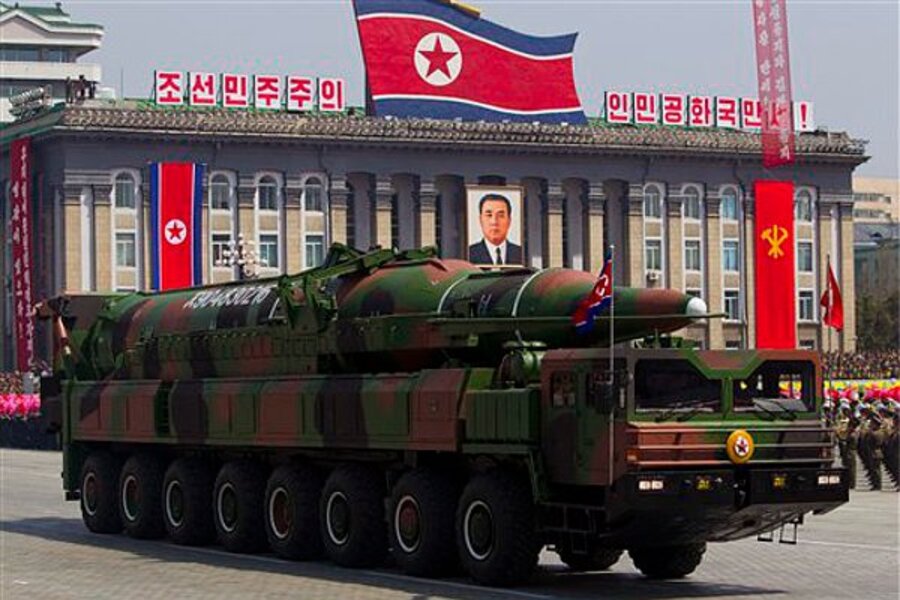North Korea missile threat? North Korea 'closer' to nuclear threat, says Pentagon
Loading...
| WASHINGTON
North Korea "will move closer" to its announced goal of being able to strike the U.S. with a nuclear-armed missile if it keeps investing in tests of nuclear and missile technology, the Pentagon said Thursday in a report to Congress.
The unclassified version of the report, which was required by a 2012 law, offered no estimate of when North Korea might achieve that capability. It said the pace of progress will depend in part on how many resources are invested.
The report fits an established U.S. intelligence picture of North Korea making an enormous effort to become a nuclear power and of an economically poor country directing a disproportionate amount of resources to its military.
Much about North Korea is a mystery to Western intelligence agencies, including the intentions of its leader, Kim Jong Un, who came to power after his father, Kim Jong Il, died in December 2011. The Pentagon report said the U.S. foresees little change in North Korea's key strategic aims, which it said to include using "coercive diplomacy" to compel acceptance of its security interests, as well as developing a nuclear arsenal and undermining of the U.S.-South Korean alliance.
"We anticipate these strategic goals will be consistent under North Korea's new leader, Kim Jong Un," it said.
U.S. intelligence agencies are not fully in agreement on how far North Korea has advanced in its effort to make a nuclear weapon small enough to fit atop a ballistic missile. In April, a U.S. congressman disclosed that the Defense Intelligence Agency believes with "moderate confidence" that the North could deliver a nuclear weapon by ballistic missile but with "low reliability." The DIA assessment did not mention the potential range of such a strike.
Director of National Intelligence James Clapper, the top U.S. intelligence official, said shortly after the DIA assessment was made public that its conclusion was not shared by other intelligence agencies. Clapper said North Korea has made progress but has not "fully developed, tested or demonstrated the full range of capabilities necessary for a nuclear-armed missile."
In its report Thursday, the Pentagon made no mention of the DIA report.
The Pentagon asserted that North Korea wants to leverage the perception that it poses a nuclear threat in order to counter technologically superior forces. South Korea, which does not have nuclear weapons, has a modern military that benefits greatly from a close alliance with the U.S. There are about 28,500 American troops based in the South.
The Pentagon report noted that North Korea has recently showcased its advances in missile technology, including an April 2012 parading of a new road-mobile intercontinental ballistic missile that the Pentagon says has not been flight tested.
"These advances in ballistic missile delivery systems, coupled with developments in nuclear technology ... are in line with North Korea's stated objective of being able to strike the U.S. homeland," the report said.
After a February 2013 nuclear test, North Korea made what the Pentagon called "authoritative public announcements" of its desire to field nuclear-armed missiles with sufficient range to attack targets in the United States.
"North Korea will move closer to this goal, as well as increase the threat it poses to U.S. forces and allies in the region, if it continues testing and devoting scarce regime resources to these programs," the report said.
Earlier this year, North Korean leader Kim Jong Un made a series of bellicose threats to attack South Korea, Japan, or the United States with nuclear weapons, sparking tough rhetoric in return. In response, the Pentagon in April announced plans to beef up its missile defenses by deploying 14 additional missile interceptors at a military base in Alaska.
Thursday's Pentagon report said the North's work on a space-launch vehicle has contributed heavily to its effort to build a missile capable of reaching the U.S. with a nuclear warhead. That work was highlighted by the launch of a satellite into space last December.
But it added that the North has yet to test a re-entry vehicle, without which it cannot deliver a warhead to a target. A workable re-entry vehicle is necessary to get a warhead back into Earth's atmosphere with protection against severe heating.
The report also projected that North Korea under Kim will stick to its current strategic priorities, including developing nuclear weapons to deter any attack from outside powers and trying to undermine the alliance between the United States and South Korea.







